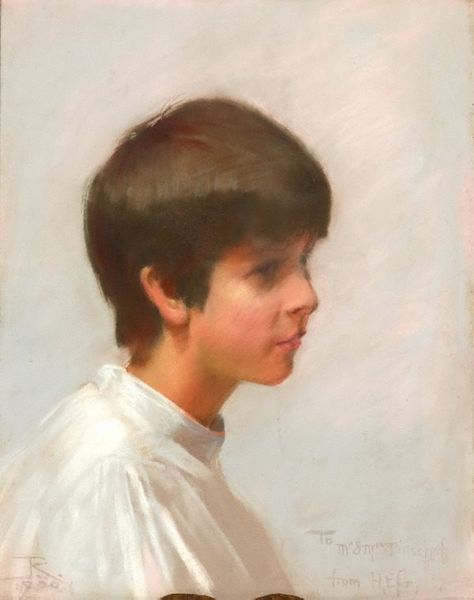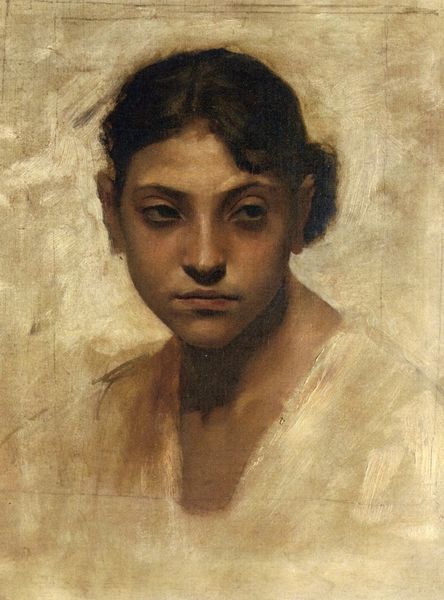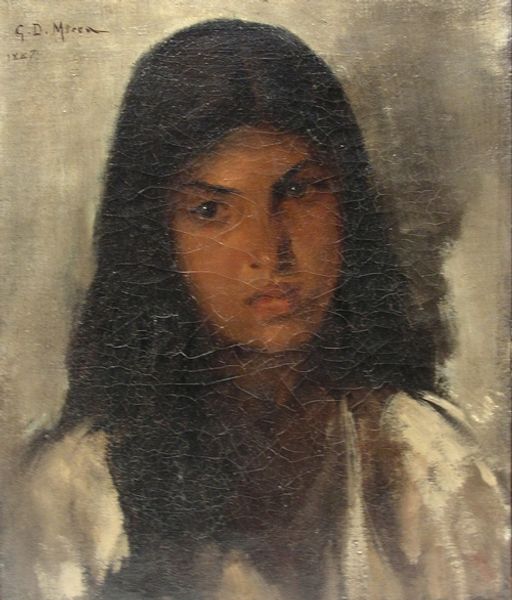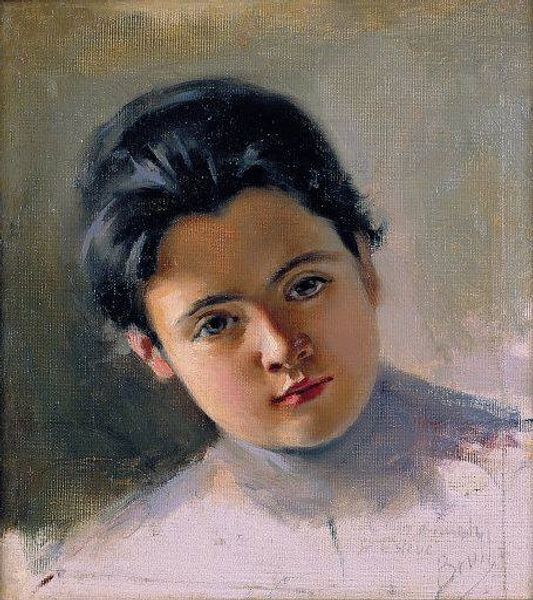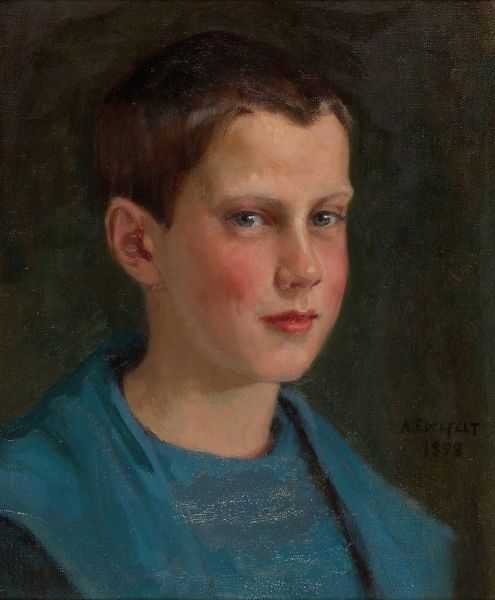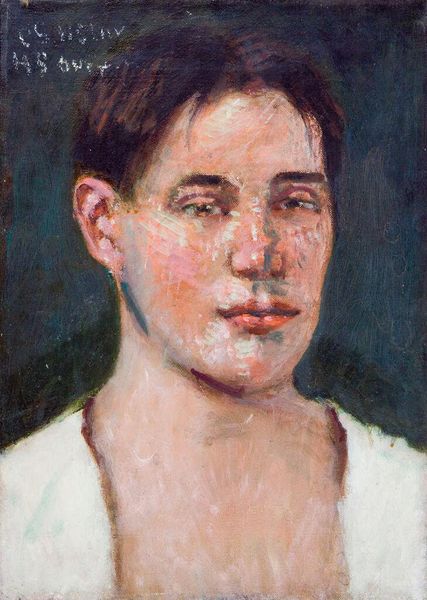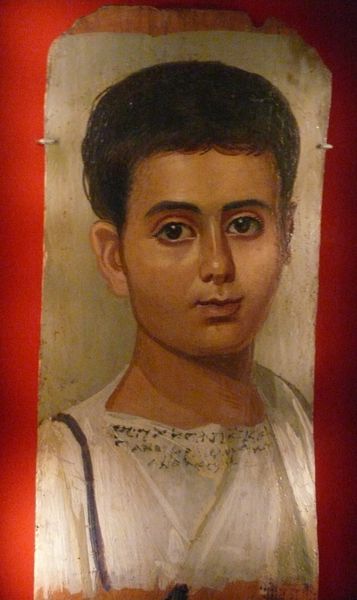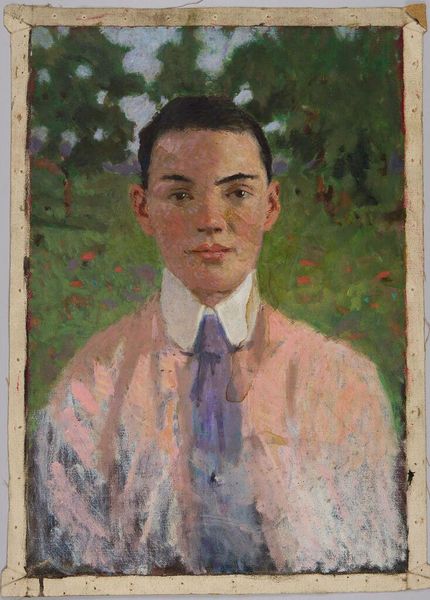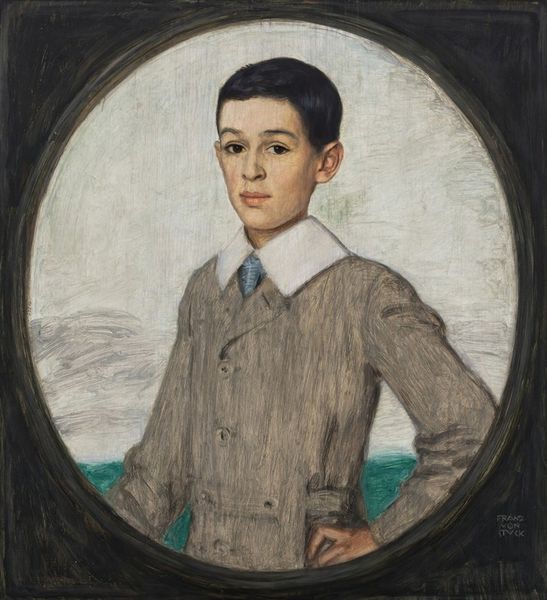
painting, oil-paint
#
portrait
#
painting
#
oil-paint
#
modernism
#
realism
Copyright: Public domain
Editor: This is Ivan Mrkvička’s “Portrait of the artist’s son,” an oil painting that seems rooted in both realism and a touch of modernism. The son’s gaze is incredibly direct. What do you see in this piece? Curator: This directness speaks volumes. Notice how the gaze avoids the saccharine sentimentality often associated with portraits of children. It's a symbol of emerging identity, an unveiling, if you will, of the artist's son as an individual. Do you feel the weight of expectation or innocence in his eyes? Editor: Expectation, definitely. And perhaps a hint of reticence. What does that tell us about the cultural memory attached to images of young men at that time? Curator: It hints at a society grappling with changing roles and responsibilities. Traditionally, a portrait of a son would highlight lineage and legacy. Here, we sense a break from that mold. The severity is softened by those blushed cheeks. How do you read the tension between those visual symbols? Editor: Maybe the blushed cheeks represent a push and pull between the familiar expectation of the devoted child and a newer expectation for self-awareness, independence. Curator: Precisely. It's a negotiation, visually encoded. The clothing even plays a part; white symbolizes purity and a blank canvas ready to be filled with knowledge. These artistic choices create layers of meaning reflecting cultural shifts. Editor: That's fascinating, to think of this portrait not just as a depiction, but a record of changing cultural expectations. Curator: And perhaps, a father's hope for his son's future. Seeing it that way has given me a new appreciation. Editor: Absolutely, for me as well. Looking at the image, now, is totally transformed.
Comments
No comments
Be the first to comment and join the conversation on the ultimate creative platform.
